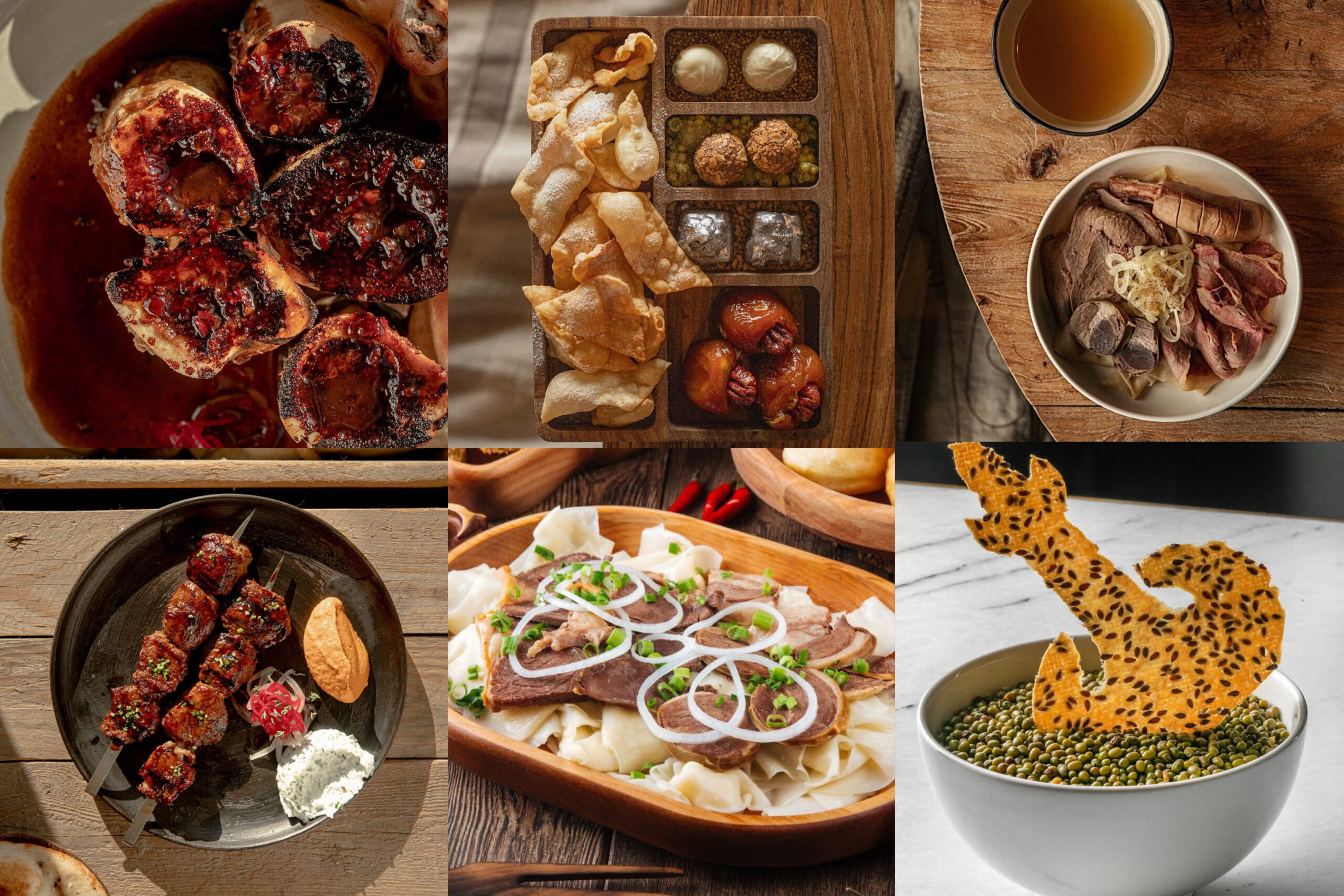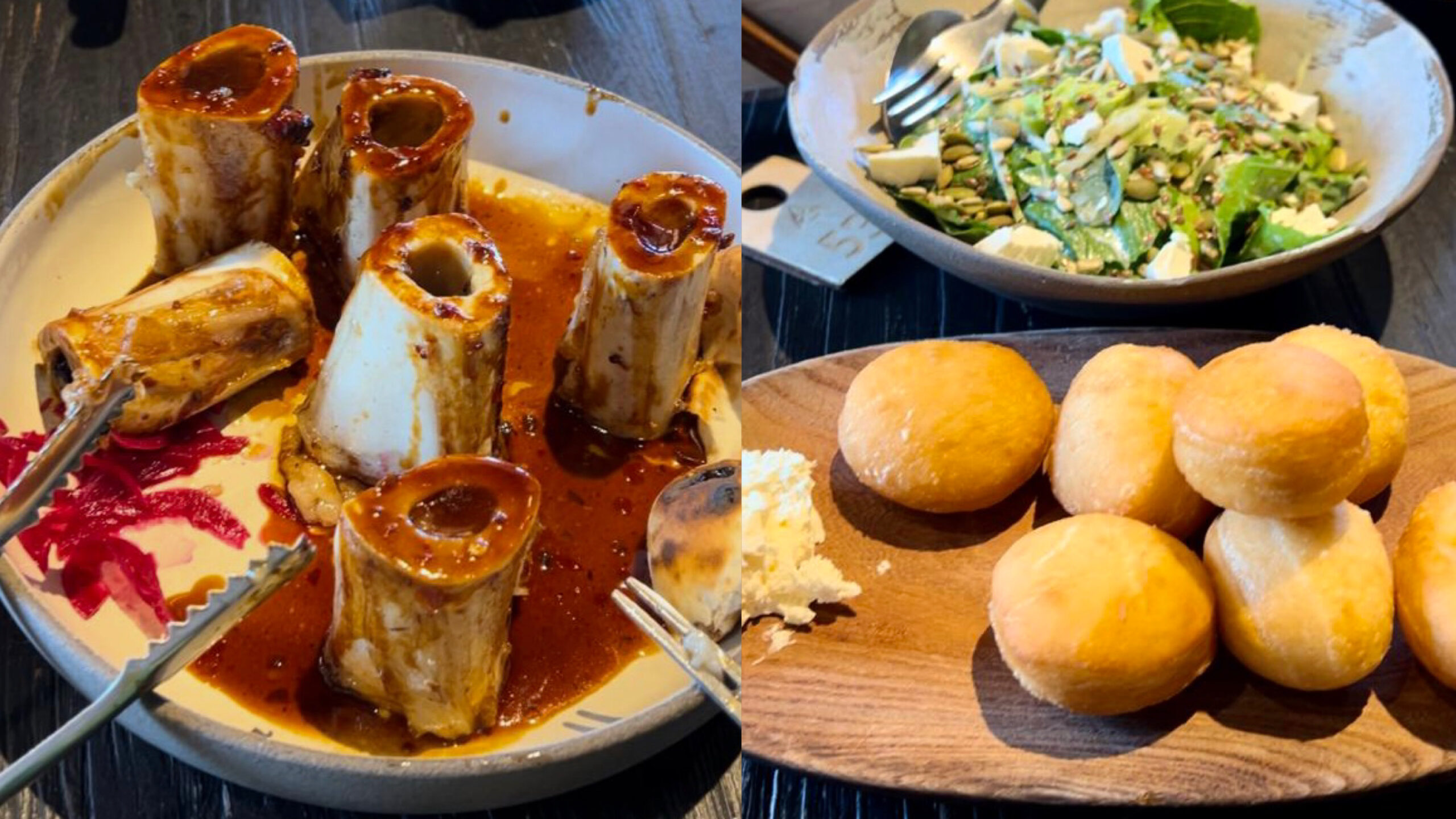Almaty’s Auyl restaurant, recently named one of the 16 Most Beautiful Restaurants in the World by Prix Versailles, captures the neo-nomadic spirit of Kazakh cuisine. Inspired by this recognition, Aida Haidar, News Editor at The Astana Times, explores what defines Kazakh cuisine and the deep-rooted connection between food and the essence of home for Kazakhs.
ASTANA — When foreigners come to Kazakhstan, they are often advised to try the local food. With horse meat at the heart of it, the idea of eating it might sound exotic to many. After all, it’s not something you can easily find at just any restaurant abroad or at a local butcher’s shop around the corner.

Photo credit: auylrestaurant/Shutterstock/Selfie’s archive
This makes Kazakh cuisine one of the most intriguing, yet surprisingly simple, to many food lovers who travel the world in search of new flavors and vibrant dishes.

Aida Haidar, News Editor at The Astana Times. Photo credit: Aibarshyn Akhmetkali
As an avid traveler myself, I have always enjoyed sampling local cuisines. I strive to approach every culinary experience with an open mind, eager to embrace whatever unique flavors and ingredients await me, without any preconceived notions.
This is the first piece of advice I would offer to any foreigner coming to Kazakhstan—especially those who are often taken aback (or even frightened) by the sheer amount of meat we consume. In our harsh climate and merciless winters, meat has been a source of sustenance for generations. Today, we live in cozy homes with heating, but imagine what it was like for Kazakhs living in their traditional yurts!
I often joke with my foreign friends that this “meat” diet is a key factor in Kazakhstan’s ability to secure such a vast territory—currently the ninth largest in the world. I’m not sure we could have accomplished this with a vegetarian diet.
But enough about that—now that you’re here in Kazakhstan, where should you go to try the local food?
One of the many advantages of Kazakhstan is its openness to diverse cultures. Since the days of the Great Silk Road, welcoming foreigners has never been an issue—in fact, it has been a sign of a thriving economy and bustling trade. This cultural exchange, of course, has had a significant impact on the food industry as well.

My personal favorite: baursak (puffy fried bread), balqaimaq (traditional Kazakh clotted cream), and marrow bones served with flatbread. Photo credit: Aida’s personal archive
Looking back two decades, it’s clear that the palate of Kazakh cuisine anticipated the rise of European and other international cuisines. However, in recent years, there has been a noticeable shift as Kazakh people have turned inward, rediscovering and celebrating their own culinary heritage. The restaurant scene has flourished, with new establishments dedicated to Kazakh cuisine opening across the country. Well-established and up-and-coming chefs alike are drawing inspiration from nature and local ingredients, creating inventive dishes that reflect the richness of Kazakh culture.
A must-visit for anyone in Almaty is Ayul, a restaurant nestled at the foot of Shymbulak mountains. Here, guests are treated not only to a culinary experience but also to a visual feast. The interior design immerses you in a neo-nomadic world, where you can sit at a round table on the floor—just as my family often welcomed guests when I was growing up. The warmth and familiarity of that tradition make Ayul feel like home.

Ayul, nestled at the foot of the Shymbulak Mountains, is a feast for both the palate and the eyes. Photo credit: Ayul restaurant
Among the standout dishes at Ayul are baursak (puffy fried bread), balqaimaq (traditional Kazakh clotted cream), and marrow bones served with flatbread. Fat, a key element of Kazakh cuisine, imparts a divine richness to the food, giving you a sense of abundant energy that would have sustained nomads on long horse rides across the vast steppes.
If you find yourself in Astana, especially during the winter months, don’t miss Qazaq Gourmet, where you can try “beshbarmak,” a traditional dish made with horsemeat and dough. This dish is the centerpiece of any important occasion in Kazakh life. My mother and I often make it when we want to treat ourselves or need comfort after a long, stressful day. For us, it’s like a feast and a dessert all in one.
The horsemeat broth served with beshbarmak is another beloved part of Kazakh cuisine. It’s not just a dish but a rejuvenating experience—something we drink on its own to restore our energy and bring clarity of mind, especially when we’re exhausted. It’s the ultimate comfort food, capable of reviving both body and spirit.
This place offers a chance to immerse yourself in a Kazakh interior as it is being reimagined by modern-day Kazakhs. While it’s uncertain whether traditional Kazakh yurts were ever filled with such vibrant colors, furniture, and pillows, this establishment still provides a unique opportunity to try authentic Kazakh food while getting a glimpse of what life might have been like in the past.
Astana also boasts another spot to experience Kazakh-inspired cuisine at Selfie Astana. However, this is a different kind of culinary experience, one that blends the modern nomadic spirit with a taste for luxury and stunning views. Located on the 18th floor, the restaurant offers a breathtaking view of Astana, a reflection of Kazakhstan’s vastness and ambition.
The focus of the Kazakh-inspired menu is on local ingredients, with each dish highlighting the richness of Kazakhstan’s natural produce. One standout is the horse heart tartare—a truly unique experience. My personal favorite, however, is the ice cream inspired by traditional Kazakh tea.

My personal favorite: the ice cream inspired by traditional Kazakh tea. Photo credit: Selfie Astana’s archive
Kazakh tea is a central element of the nation’s identity, with a specific way of brewing it and using milk with a high-fat content. The color of the tea also matters. It’s more than just a beverage; it’s a symbol of bringing family and guests together, offering a sense of warmth and comfort, even when the weather is cold or life feels stressful. Whether enjoyed alone or with a group, Kazakhs take their tea seriously. Sampling ice cream with the same flavors gives you a sense of home from a different perspective. Its velvety texture allows you to enjoy both luxury and the coziness of home in one bite.
As tempting as this all sounds and while these restaurants offer wonderful experiences, my advice is to make a Kazakh friend while you’re here. You will most definitely find yourself invited to a Kazakh home to try homemade beshbarmak—served in a more humble setting than a professional kitchen. It’s in the hands of mothers and grandmothers that simple ingredients transform into a dish that not only satisfies hunger but also nourishes the longing for home and connection that so many of us feel in today’s world.
Even the chef Evgeniy Chekanin, whom I interviewed this September, shared that the best beshbarmak he had ever tasted wasn’t prepared by a renowned chef but by an ordinary Kazakh woman at home. For Kazakhs, food is intertwined with the concept of home. For our ancestors, who were constantly on the move, home was where they could gather around a hearty meal. And to this day, our food brings that same sense of home, wherever we are.


